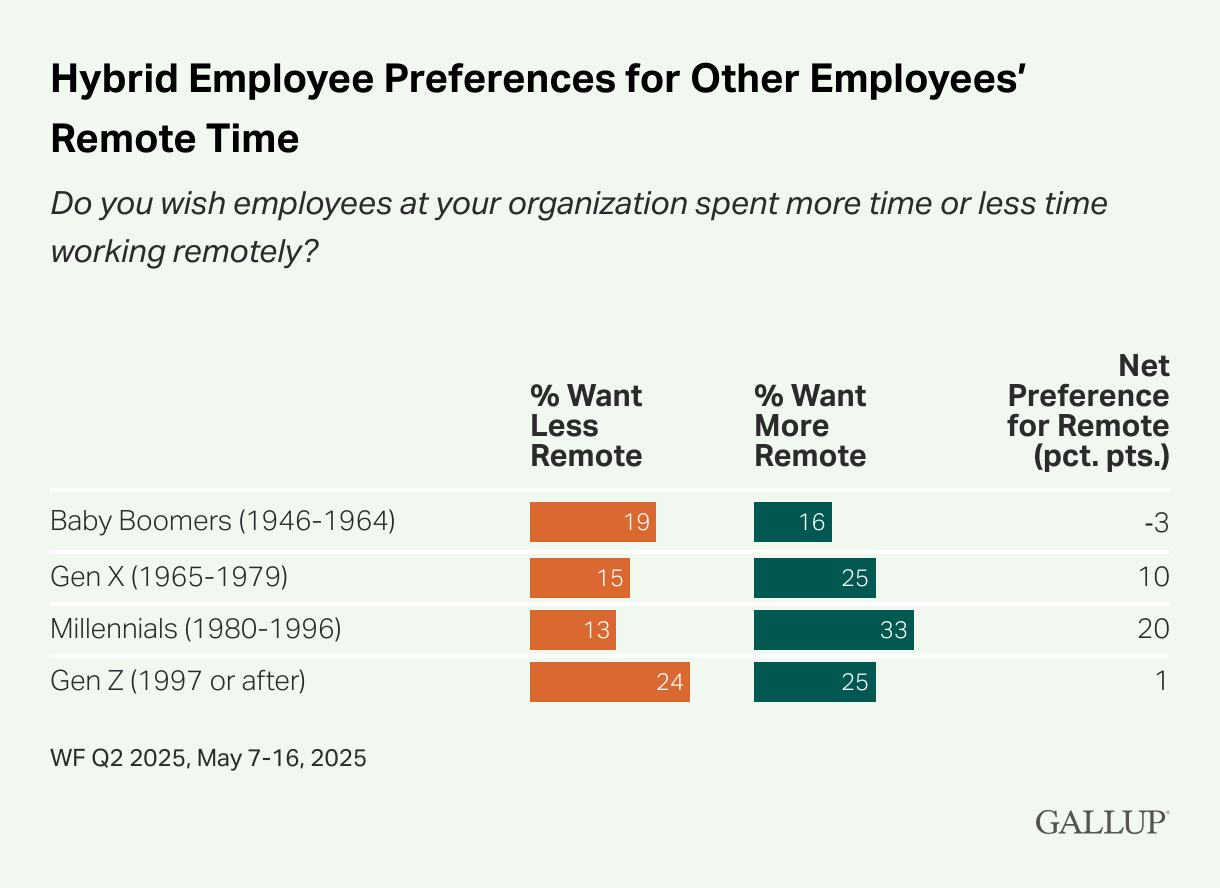Meeting the Needs of a Changing Workforce
The workplace has undergone a dramatic transformation in recent years, and flexibility has emerged as one of the most powerful drivers of employee satisfaction and retention. But here’s the nuance: not all employees define flexibility in the same way. According to a recent Gallup study shared by the IPR Organizational Communication Research Center, Millennials and Gen Z view hybrid and remote work differently. A third of Millennials want more remote options, while nearly a quarter of Gen Z would actually prefer less remote time.
These generational divides make one thing clear: a one-size-fits-all approach to workplace policies doesn’t work. Employers, especially in competitive markets like the U.S. and Europe, must design flexible workplace strategies that balance the independence Millennials crave with the structure and connection Gen Z values.
Flexibility is No Longer a Perk
For today’s professionals, especially those in PR and communications, flexibility is no longer a “nice-to-have”; it’s a core expectation. In a survey of more than 300 industry leaders, the majority agreed that flexible work models are central to productivity, engagement, and retention (IPR). Employees with control over their schedules and work locations reported not only greater satisfaction but also stronger loyalty, recommending their employers as trustworthy places to work.
For U.S. employers competing in talent-driven hubs such as New York, San Francisco, and Los Angeles, these insights underscore the importance of incorporating flexibility into the employee value proposition.
Where Employees Stand on Hybrid Work
Hybrid work is now the dominant model worldwide, with 61% of communicators splitting time between the office and home, but preferences don’t always match reality. Nearly half of respondents said they’d prefer to be in the office just 1–2 days a week, compared to the 3–4 days most are currently asked to come in (Gallup).
This mismatch signals an opportunity for employers to revisit return-to-office policies and ensure they align with what employees want. Global companies with operations across the U.S., Europe, and Asia may need to take a geo-specific approach, recognizing that preferences vary not only by generation but also by region.
Productivity and Well-being Gaps
The connection between flexibility and productivity is well documented, but the research shows ongoing challenges. While 59% of communicators rated themselves as productive or highly productive, many flagged inefficiencies, heavier workloads ahead, and uncertainty around return-to-office mandates as barriers to focus (IPR).
Well-being remains another critical gap. While 70% reported strong mental health outside of work, less than half felt the same about their well-being on the job. Nearly half of the respondents reported frequent stress, and more than a quarter experienced burnout. These trends are consistent with global studies showing that workplace flexibility supports employee well-being, but only when paired with clear processes and realistic workloads (IPR).
The Path Forward
The message from employees is clear: flexibility isn’t optional, it’s foundational. Organizations that embrace hybrid and remote work while also investing in mental health, transparent leadership, and career growth are best positioned to thrive.
For global employers and U.S.-based companies alike, the future of work will be defined by a balance between remote and in-person work, independence and collaboration, productivity and well-being. Companies that get this balance right won’t just attract top talent, they’ll keep them.


